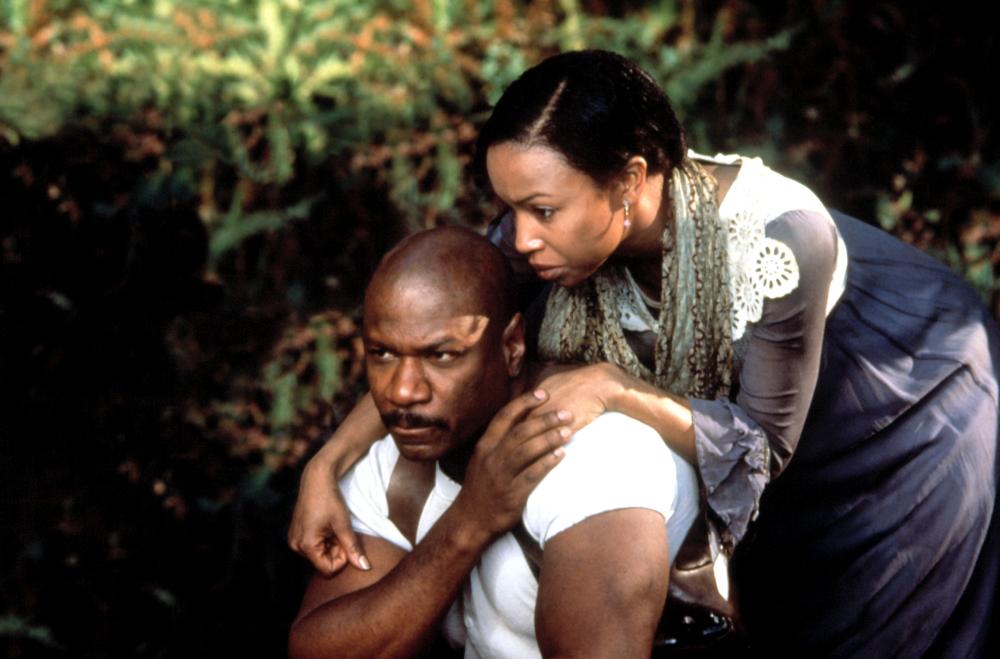While flipping through cable channels searching for something to watch, I settled on John Singleton's Rosewood (1997), featuring Ving Rhames, Don Cheadle, and Elise Neal. I was generally aware of what happened there and that I was watching a fictionalized account of the events. I compartmentalized my anger while watching, angry about things I know happened elsewhere, if not Rosewood (like cutting off body parts of lynched men like ears and penises). I set other matters aside until I could research what happened so I could be mad for the right reason.
It shouldn't be a spoiler that the end result was that all Black residents of the town were murdered or burned out. Rosewood was an almost all-Black community after white residents moved away when the cedar trees were wiped out and pencil mills closed. Whites lived in nearby Sumner, Blacks stayed in Rosewood, and the communities generally got along, except for the normal segregation, voter suppression, and white supremacy.
Rosewood was mainly self-sufficient. It had three Black churches, a school, a Prince Hall Masonic Lodge (different than the white Masons), a turpentine mill, a sugarcane mill, and their own baseball team, the Rosewood Stars. Some Black men worked at the nearby sawmill in Sumner. Some women worked as domestics for white families. One of those domestics was Sarah Carrier (Aunt Sarah), who figured prominently in the film and real life.
The first thing that angered me was the date of what would become known as the Rosewood Massacre. It came three years after Ocoee, Florida, another Black town, was wiped out after two men tried to vote in the 1920 Presidential election. It was less than two years after the Greenwood District of Tulsa, known as Black Wall Street, was bombed, burned, and ravaged. The only lesson white citizens seemed to learn from the previous destruction of two Black communities is that there would be no consequences.
When researching what happened in Rosewood, I found the information in the film was mostly accurate. The Ving Rhames character (Mr. Mann) was made up, as was the suggestion of a happy ending for a few characters. The massacre was set off because a 22-year-old white woman was beaten by her white lover and blamed it on a Black man. She never claimed she was raped, but word spread anyway that she was. The white man who beat her was seen leaving by Fannie's maid, Aunt Sarah. When asked, she claimed she didn't see anything for fear of retribution from white people. When she did come forward, she was shot and killed. In the movie version, she was murdered right after she credited a white man with the assault and was shot in the chest. In real life, she was shot in the head.
The white media generally reported that two white men and six Blacks died. Several newspapers, including the Gainesville Daily Sun, ran editorials in favor of the mob action. "Let it be understood now and forever that he, whether white or black, who brutally assaults an innocent and helpless woman, shall die the death of a dog."
Interviews years later with the survivors suggest the Black death toll ranged from 27–150. There are reports of a mass grave containing 26 Black bodies.
Seventy-one years later, the State of Florida issued a report claiming a total of eight deaths were confirmed and that there was no evidence of mass graves. Many white landowners refused permission to search their land, and no archeological digs were conducted. “We can document that eight people were killed during the racial violence — six blacks and two whites," said House Speaker Bo Johnson. "The rest of the black community of Rosewood was driven from the area by white mobs who then burned their homes, a church, a Masonic hall, and a store. The black residents never returned.”
The State of Florida report had over 500 pages of documentation, making the Rosewood Massacre less than everyone knew it to be. Ultimately, there came a request for reparations for the massacre's survivors. Survivors claimed the State of Florida failed to protect the citizens of Rosewood. Unlike killings of Native Americans (for which Florida paid no reparations), the citizens of Rosewood were taxpayers and entitled to government protection. It wasn't a brief incident that lasted a few hours like two separate lynchings in Wauchula, FL, and Perry, FL, the year before. The Rosewood Massacre occurred over several days while law enforcement provided no support. The Governor threatened to send in the National Guard but refused to unless he got a request from the local sheriff. That request never came.
Reparations were ultimately awarded to Rosewood survivors and those who could prove their families owned and lost land due to the massacre. No reparations were granted in Ocoee though they did get a sign almost a century later. One reason Rosewood's descendants were successful when others weren't is that a white witness described the lynching of Sam Carter. Without his testimony, some believe there would have been no reparations.
Despite the "victory" of obtaining reparations for a few, it didn't resemble justice. The film ended with the suggestion that the two main Black male characters would meet up with their respective women in Gainesville, FL, and start over. In reality, one of those characters was fictional, and the other was most likely dead. Having now written about it, I'm no longer upset about the film as I've worked it out in my mind. It's the no justice, no justice, never any justice that stays with me.
This post originally appeared on Medium and is edited and republished with author's permission. Read more of William Spivey's work on Medium. And if you dig his words, buy the man a coffee.
